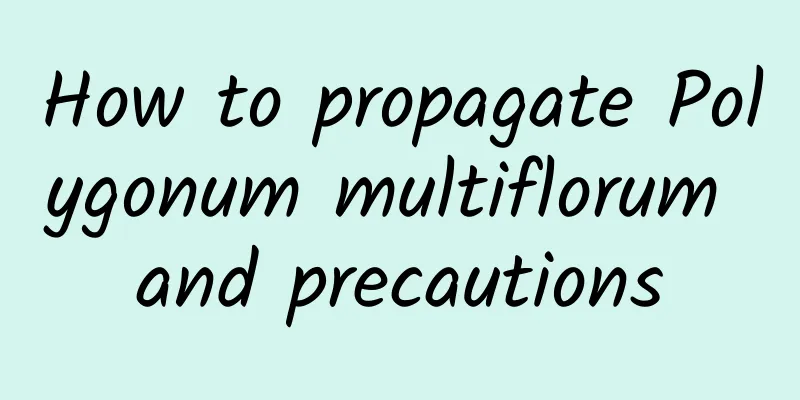Potato planting methods and management techniques

|
Potatoes, commonly known as potatoes , are a crop that can be used as both a vegetable and a food. Potatoes are known for their short growth cycle and high unit yield, and are widely grown throughout China. Although potatoes have high yield potential, many growers encounter some problems that affect yield during the planting process. In fact, growing potatoes is not complicated. As long as you follow the correct methods, you can harvest high-quality and high-yield potatoes. Let’s learn about potato planting methods and management techniques. 1. Cut into pieces and germinate About 20 days before sowing, usually in early March, start germinating potatoes. Each cut piece should have at least one eye, and 10-15 pieces per pound is appropriate. After cutting, use dry ash or carbendazim powder (diluted at a ratio of 1:200) for sterilization and disinfection, and then germinate after drying. There are two methods of germination: germination on an indoor sand bed, or digging a hole outdoors, stacking sand layers, and covering with film and straw mats for insulation. During the germination period, water appropriately to keep moist until the buds grow to 0.5-1.0 cm. 2. Site selection and land preparation Check the soil moisture before sowing. If it is insufficient, irrigate the furrows and create moisture 7-10 days before sowing. Potatoes are planted using the double-ditch planting method, with a maximum row spacing of 50 cm and a minimum row spacing of 40 cm, to ensure that the soil is loose and fertile, suitable for the enlargement of potato tubers. 3. Sowing film There are two ways of placing the potatoes when sowing: with the seed bud facing downward, the potato roots will grow long and the seedlings will be strong. Although the yield is small, the potatoes will be large in size; with the seed bud facing upward, the potato roots will be short, the yield is high, but the potatoes will be small in size. After sowing, cover the soil and compact it, using a microfilm to maintain moisture. 4. Ventilation and seedling management About 20 days after sowing, when the potato seedlings emerge from the soil, break the film to let in air to avoid steaming the seedlings. When the seedlings are 10 cm tall, compact the soil to conserve moisture. Control watering in the early stage, and irrigate appropriately according to weather conditions after flowers appear. Pay attention to the prevention and control of pests such as aphids and thrips during the seedling stage. 5. Scientific fertilization Fertilizing potatoes follows the principle of "attack at the beginning, maintain in the middle, and control at the end". When 80% of the underground fruits have emerged from the soil, apply quick-acting fertilizer and spray Diguo Zhuangdi Ling to promote the enlargement of underground fruits. Potatoes like to be fertilized with farmyard manure, 4000-5000 jin per mu, and chemical fertilizers should be used in a ratio of 1.85:1:2.1 for nitrogen, phosphorus and potassium. Note that the demand for potassium fertilizer is large. 6. Disease and pest control Pay attention to the prevention and control of late blight, downy mildew, bacterial wilt, etc. in the middle and late stages. Use mancozeb spray for prevention and control in the early stage of the disease. After the bacterial wilt is discovered, the whole plant should be pulled out and the diseased holes should be disinfected, and agricultural streptomycin should be sprayed to prevent the spread of the disease. The above are the key points of potato planting and management techniques. You can consider them based on the actual situation. Although potatoes have a high yield, every step in the planting process cannot be ignored.
|
<<: Why does the rubber tree lose its leaves?
>>: How to remedy the problem that osmanthus leaves fall off when touched?
Recommend
How to grow Martian flowers
1. Maintenance methods 1. Temperature: Mars flowe...
Diseases and Pests of Cycas and Their Control
Diseases and Pests of Cycas and Their Control Spo...
Echinacea Pests and Control Methods
Pests of Echinacea: Pieris rapae symptom Cabbage ...
Cultivation methods and precautions of large-leaf gardenia
1. Breeding methods 1. Soil: It is best to use lo...
High-yield pruning method for bitter melon
Bitter melon , as a member of the Cucurbitaceae f...
How to prune Amaryllis
When to prune Amaryllis Amaryllis can be pruned i...
What does Blue Enchantress mean?
1. Staying together is a commitment Blue Rose has...
Cultivation methods and precautions of Nine-tailed Fox Succulent
The Nine-tailed Fox succulent is loved by many su...
What to do if the leaves of the palace lantern kalanchoe wilt
The leaves of the Kalanchoe wilt: too much wateri...
The shape of jasmine flowers, pictures of jasmine flowers
1. The shape of the jasmine flower Leaves: Jasmin...
What flowers can be watered with willow water?
Willow watering effect Willow water can be used t...
Is it better to grow mung beans in water or soil?
Is it better to grow mung beans in water or soil?...
How to grow a money tree in summer
1. Lighting The money tree likes sunlight and nee...
What flowers are suitable for outdoor gardens? What flowers are suitable for outdoor gardens?
What flowers are suitable for outdoor gardens The...
How to repot Chinese evergreen
1. When For this plant, it is best to repot it in...









